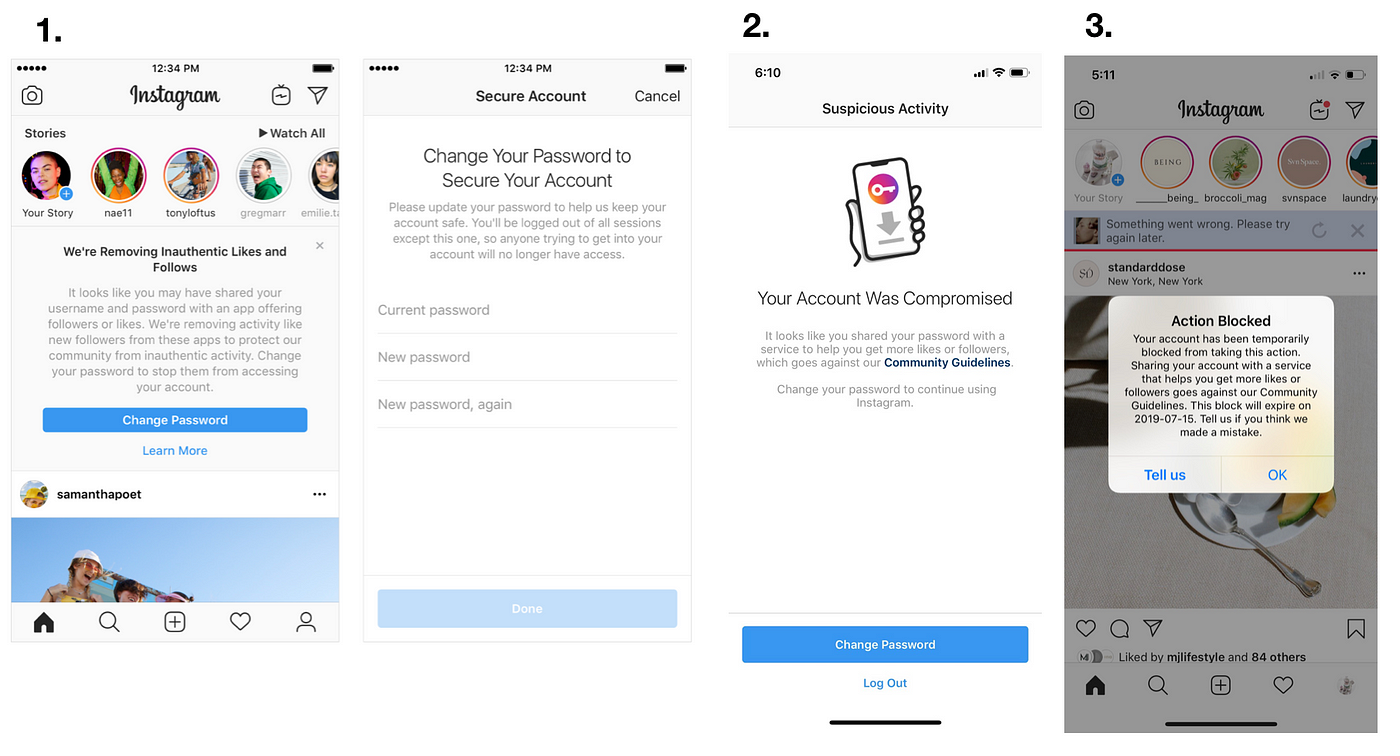

In the influencer economy, you're paid in part for the size of your audience, which means that, if an influencer's account is swarming with fake followers, brands are paying extra to reach people who don't exist. "If you'll see a jagged, stair-like pattern out of nowhere, that's fraud." "Normal users will have a smooth logarithmic slope," he says. According to Hogue, detecting drip followers requires a closer inspection of those follower account graphs. "A year ago, I would see influencers buy one to 10,000 followers at a time, and it would show up on a graph as a giant jump out of nowhere," says Andrew Hogue, creator of IG Audit, an analytical tool he describes as "Carfax for influencers." (Vogt notes that those jumps can happen naturally, like after a Today show appearance, so HelloSociety always checks the graph against an influencer's post history.) Lately, sellers have been offering "drip followers": If an influencer orders 30,000 followers, for example, they arrive only 50 at a time, every day, for 600 days. The best way to spot fakes now seems to be taking note of the rate at which an influencer acquires followers. Online tricks evolve like Pokémon, though, and fake followers are getting much harder to identify. Also suspicious: lots of digits in the username, or a person who seems to live in Turkey or Indonesia, but follows only California-based influencers. An account with no profile picture, say, or one that follows 10,000 people and never posts. All of these tools (and there are many, with names like Social Audit Pro, IG Audit, Hypr, HypeAuditor, and Famoid) work a little differently, but they're all looking for deviations from the platform's norm. That's why HelloSociety and most other influencer marketing businesses rely on online tools to sniff out counterfeit or fraudulent accounts-and influencers who profit from them. Not being rubes, influencer economy participants know that signing a contract isn't enough to certify continuous truthfulness. In their contemporary form, "fake followers" are often real people, just not always the person they say they are, and, of course, not someone who is an actual fan (and hence, potential customer). "Botting" is using automated fake accounts-bots-to bolster an audience, à la the Kremlin-linked Internet Research Agency. "Comment pods" (or "engagement pods") are groups of influencers who agree to like and comment on each other's posts to artificially drive up engagement and improve their algorithmic performance. "They have to agree that they haven't participated in comment pods, botting, or purchasing fake followers." Let's break down these forms of fakery. "In the last few years, we've started holding influencers accountable in their contracts," says Gabrielle Vogt, senior manager of digital talent at influencer marketing agency HelloSociety. In the influencer economy, you're paid in part for the size of your audience, which means that, if an influencer's account is swarming with fake followers, brands are paying extra to reach people who don't exist.Īgencies and would-be sponsors know they're being scammed, and are growing more vigilant. A report by cybersecurity firm Cheq projects that these fake fans will cost brands $1.3 billion in 2019 alone. The fake followers would fit in anywhere: padding out an obscure microinfluencer's ranks, creating the illusion of customers for a would-be T-shirt seller, skulking among legions of real fans on celebrity accounts like Ellen DeGeneres'.


 0 kommentar(er)
0 kommentar(er)
